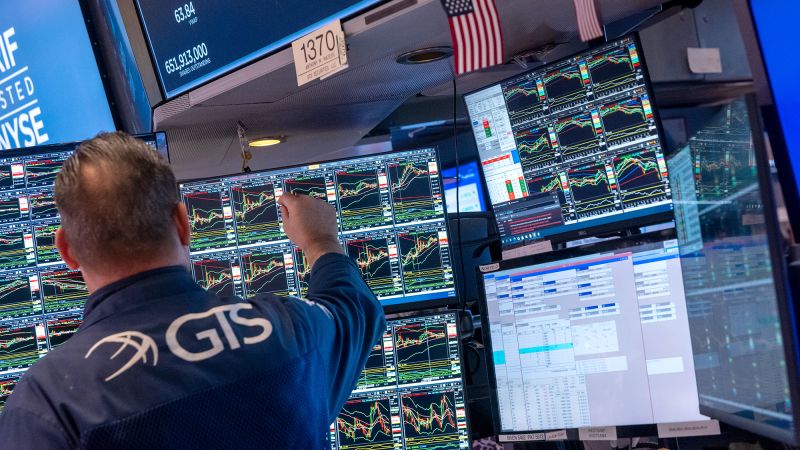
The Rollercoaster Ride of the Stock Market: A Recent Case Study
The stock market, that unpredictable beast, has once again demonstrated its volatile nature. What began as a seemingly triumphant surge, fueled by optimism and bargain-hunting, quickly devolved into another significant downturn, leaving investors wondering what the future holds. This recent episode serves as a potent reminder of the inherent risks and complexities involved in market trading.
The initial rally was nothing short of spectacular. Fueled by a confluence of factors, the market experienced a rapid and substantial increase in value. One major driver was the perception that stocks were undervalued. After a period of decline, many investors saw an opportunity to acquire shares at prices they considered attractive, leading to increased buying pressure. This bargain-hunting mentality played a significant role in pushing prices upward.
Furthermore, a glimmer of hope emerged on the trade negotiation front. Whispers of progress, or even just a less aggressive stance from involved parties, were enough to inject a dose of optimism into the market. Uncertainty surrounding trade policy had been a significant weight on investor sentiment, and any hint of a resolution, however tentative, provided a welcome respite. This positive sentiment acted as a catalyst, amplifying the effect of bargain-hunting and further propelling the rally.
However, this upward trajectory proved unsustainable. The initial euphoria quickly dissipated, giving way to a considerable drop in prices. Several factors likely contributed to this abrupt reversal. Firstly, the initial rally might have been overly enthusiastic, driven more by speculation and hope than by fundamental changes in the market. A period of rapid growth, particularly one driven by sentiment rather than concrete improvements, often becomes prone to corrections.
Secondly, underlying economic concerns might have reasserted themselves. While trade negotiations provided a temporary distraction, anxieties about broader economic trends, such as slowing global growth or potential recessionary pressures, may have lingered beneath the surface. As the initial excitement faded, these underlying worries re-emerged, causing investors to reassess their positions and potentially trigger sell-offs.
Thirdly, the inherent volatility of the market itself played a role. Market fluctuations are often amplified by factors such as algorithmic trading and herd behavior. A sudden shift in sentiment, perhaps driven by a piece of news or a change in market expectations, can lead to a cascading effect, driving prices down rapidly. In this case, the initial surge may have been so dramatic that it was inherently unsustainable, leaving the market ripe for a correction.
This recent episode highlights the crucial need for investors to approach the market with a balanced and nuanced perspective. While the allure of quick profits can be tempting, it is important to recognize the risks involved and to avoid being swept up by short-term market sentiment. A long-term, well-diversified strategy, combined with a thorough understanding of market dynamics, remains the best approach for navigating the unpredictable world of stock investing. Relying on speculation and reacting impulsively to short-term fluctuations can often lead to significant losses. A measured approach, focused on fundamental analysis and careful risk management, remains the key to success in the long run.



Leave a Reply